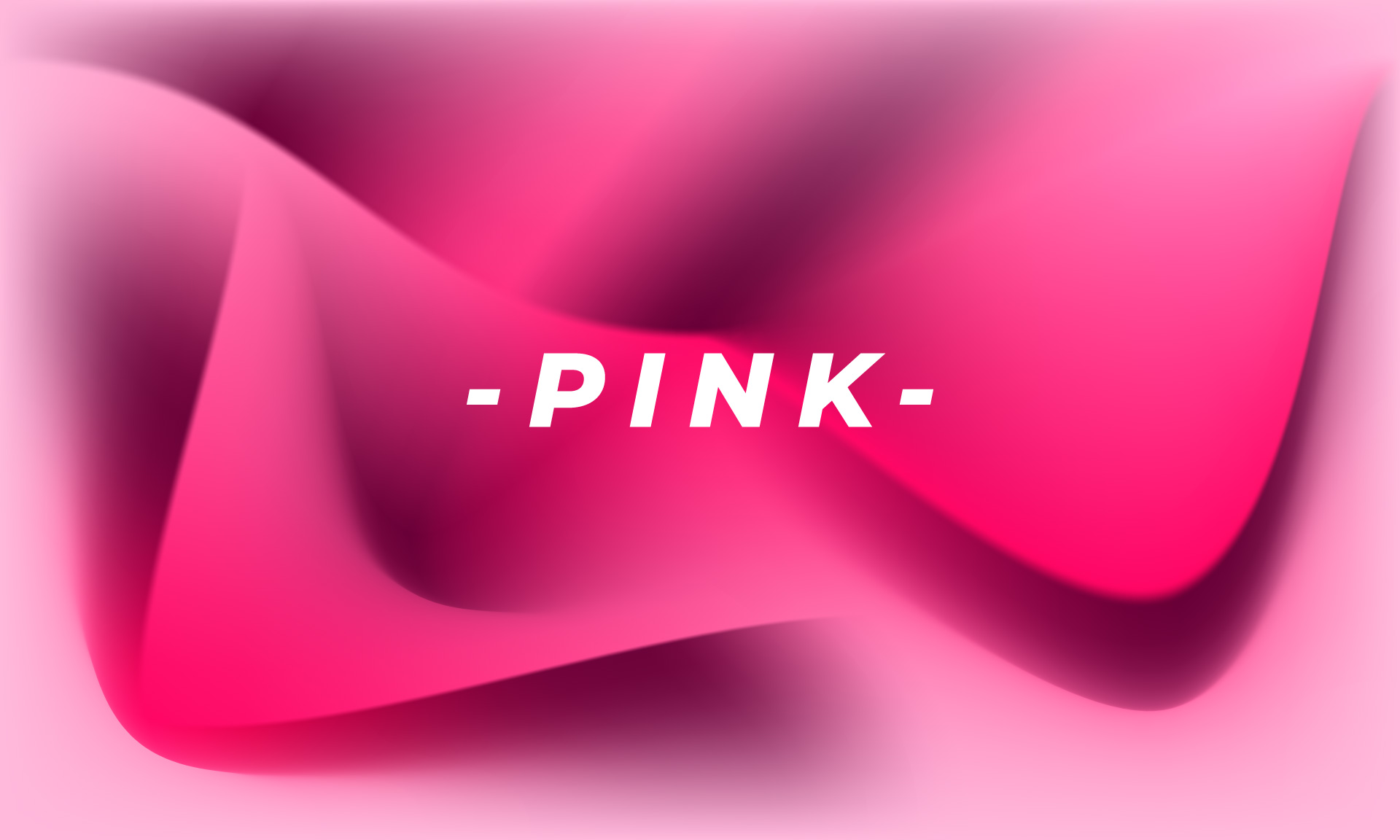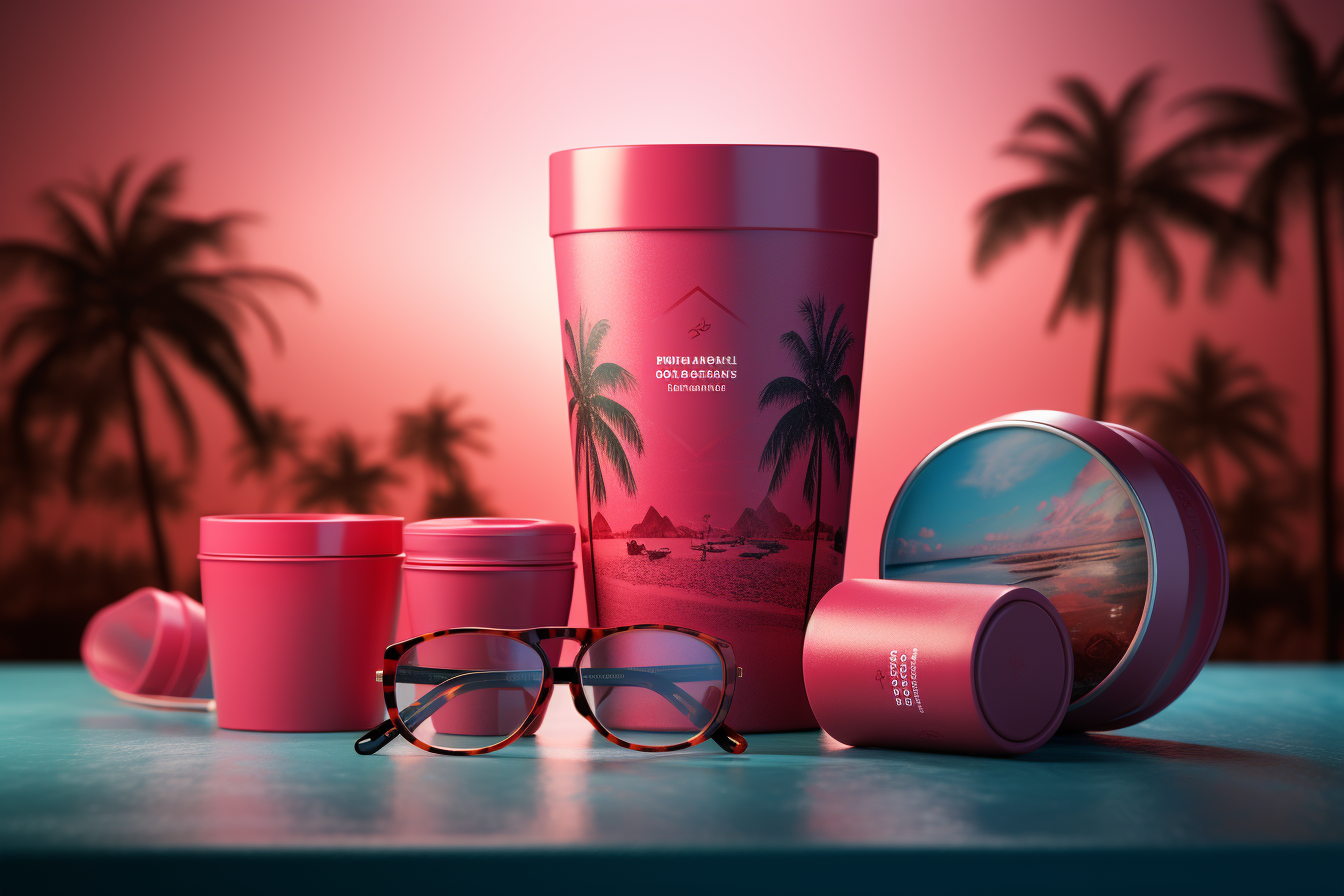Why The Color Pink?
Color plays a crucial role in branding and marketing, as it has the ability to evoke emotions and influence consumer behavior. One color that has gained significant attention in recent years is pink. Pink is a color that is often associated with femininity, romance, love, and sweetness. However, it is not just limited to these associations and has been used effectively in branding for a variety of industries.

Let’s explore the use of pink in branding, its impact on consumer behavior, and the industries that have effectively leveraged this color in their branding strategies. We will also examine the different shades of pink and their unique meanings, as well as the cultural and historical significance of this color.
Let’s dive deeper into the world of pink in branding and discover its power and versatility.
Pink’s Psychological Influence
Before we get into the several businesses that have successfully used pink in their branding, it’s crucial to grasp the psychology of this color. Pink is frequently linked with femininity, and it is frequently used in products marketed to women, such as cosmetics, apparel, and accessories. Pink, on the other hand, is utilized in products and branding oriented at children, such as toys and clothing.

Pink is a color that conveys feelings of tranquility, tenderness, and nurturing. It is frequently related with feelings of love, compassion, and empathy. Pink has been demonstrated in studies to have a soothing impact on people and can even lower heart rate and blood pressure. It is also said to give a sense of security and comfort, which is why it is frequently employed in branding directed at newborns and young children.
Pink can be used in marketing and branding to generate feelings of playfulness, enthusiasm, and enjoyment. When coupled with black or white, it can also express a sense of sophistication and wealth. It is crucial to remember, however, that the efficacy of pink in branding is heavily dependent on the target audience and the shade of pink employed.
Pinks of various tints can have distinct meanings and elicit different emotions. A light pink, for example, is frequently connected with purity, romance, and femininity, but a hot pink is frequently associated with vitality, excitement, and playfulness. Understanding the psychology of pink allows brands to use this color effectively in their branding strategies to connect with their target audience and elicit the necessary emotions.
What Pink Means In The World Of Branding
In the world of branding, pink is a powerful color that can evoke a range of emotions and convey different messages depending on how it’s used. Here are some of the key meanings associated with pink in branding:
Femininity: Pink is often associated with femininity, and is commonly used in branding and marketing for products and services targeted at women. From cosmetics and fashion to health and wellness, pink has become a popular choice for brands looking to appeal to a female audience.
Romance and Love: Pink is also associated with romance, love, and tenderness. This makes it a popular choice for brands that offer products or services that are intended to evoke emotions of love and affection, such as greeting cards, chocolates, and florists.
Playfulness and Creativity: Lighter shades of pink are often associated with playfulness, creativity, and imagination. This makes it a popular choice for brands that cater to children or those with a childlike spirit, such as toy companies or children’s clothing brands.

Luxury and Sophistication: Darker shades of pink, such as magenta, can be used to convey a sense of luxury and sophistication. This makes it a popular choice for high-end brands in industries such as fashion, beauty, and technology.
Uniqueness and Boldness: Pink is not typically associated with boldness or uniqueness, which can make it an unexpected choice for brands looking to stand out in a crowded marketplace. By using pink in unexpected ways, such as in combination with other bold colors or in non-traditional products or services, brands can create a distinctive identity that sets them apart.
Pink has a range of meanings and associations in the world of branding, and can be used to convey different messages depending on the context and target audience. By understanding the psychology of color and the meanings associated with pink, brands can use this powerful color to create a distinct identity that resonates with their target audience and sets them apart from competitors.
Industries That Use Pink In Their Branding
Cosmetics and Beautification
Pink is a popular color in the cosmetics and beauty business because it is linked with femininity and is thought to complement a wide range of complexion tones. Many beauty brands use pink in their branding, ranging from light pastels to bright hot pinks. Glossier, a popular cosmetics brand, for example, uses a light pink color in their logo and product packaging to convey a sense of simplicity, softness, and approachability.
Food and Drink
Pink is frequently used in the food and beverage sector to convey sweetness and indulgence. It is frequently found in pastries, candies, and beverages. For example, the popular beverage company Pepto-Bismol uses a bright pink hue in their branding to generate a sense of relief and comfort for consumers who may be suffering from digestive troubles.
Pink is a trendy color in the fashion industry, especially in women’s clothes and accessories. It is frequently used in apparel and accessories to convey femininity, playfulness, and romance. Many high-end fashion brands, including Chanel and Valentino, have used pink in their branding and collections.
Toys & Children’s Items
Pink is a popular color in the toy and children’s products industries because it is connected with innocence and playfulness. It is widely used in things for young children including as dolls, plush animals, and apparel. Barbie, for example, uses a bright pink tint in their logo, which provides a sense of joy and adventure for young children.

Health and non-profit organizations
Pink is frequently used in the branding of non-profit and health organizations, especially those concerned with breast cancer awareness and research. Pink has become synonymous with breast cancer awareness, and many organizations utilize different shades of pink in their branding to convey empathy, hope, and support to individuals afflicted by the disease.
Cultural And Historical Significance Of Pink
Pink has had a variety of cultural and historical meanings throughout history. Pink has long been associated with femininity, love, and romance in Western cultures. Pink, on the other hand, may have distinct connotations and meanings in different civilizations. Pink, for example, is frequently connected with cherry blossoms and the fleeting essence of life in Japan. Pink is related to the heart chakra in Hinduism and is thought to represent compassion, love, and happiness. Pink may also be linked with masculinity rather than femininity in some cultures.

Historically, pink has not always been associated with femininity. In fact, up until the early 20th century, pink was considered to be a more masculine color, while blue was considered to be more feminine. It wasn’t until the mid-20th century that pink became associated with femininity, and even then, it was not a universal association. In the 1980s, the color pink became associated with breast cancer awareness, and the iconic pink ribbon has become a symbol for breast cancer awareness and research. Today, pink is still commonly used in breast cancer awareness campaigns and fundraising efforts. In terms of fashion, pink has had a significant impact on various fashion movements throughout history. In the 18th century, pink was a popular color for men’s clothing, particularly in England and France. In the 1950s, pink became a popular color for women’s clothing, particularly in the form of the iconic “pink dress” worn by Marilyn Monroe in the film “Gentlemen Prefer Blondes.”
Tips For Using Pink In Your Branding
Now that we have explored the psychology of pink, its impact on consumer behavior, and its historical and cultural significance, let’s look at some practical tips for using pink in your branding:
Understand your target audience: Before incorporating pink into your branding strategy, it’s important to understand your target audience and what associations they have with the color pink. This will help you choose the right shade of pink that resonates with your audience and evokes the desired emotions.
Use pink in combination with other colors: While pink can be a powerful color on its own, it can be even more impactful when used in combination with other colors. Pairing pink with complementary colors such as green, blue, or purple can create a visually striking and memorable brand identity.

Consider the shade of pink: Pink comes in a wide range of shades, from soft pastels to bright neon hues. The shade of pink you choose can have a significant impact on the emotions and associations it evokes. Soft pastel pinks may evoke a sense of calmness and femininity, while bright neon pinks may evoke a sense of excitement and playfulness.
Use pink strategically: Pink can be a powerful tool in branding and marketing efforts, but it should be used strategically and in moderation. Overusing pink in your branding can lead to a sense of cliché or superficiality, which can turn off potential customers.
Test and iterate: As with any branding strategy, it’s important to test and iterate your use of pink. Monitor consumer responses to your branding efforts and adjust your strategy as needed to ensure that your brand is resonating with your target audience.
The Function Of Pink In Website Design
In addition to branding, pink can also be used effectively in website design. Here are some ways in which pink can be used to enhance the user experience on a website:
To draw attention: Pink is a high-contrast color that can be used to draw attention to important elements on a website, such as calls-to-action or navigation buttons. The use of pink in these elements can help them stand out and encourage users to interact with them.

To create a sense of calmness: Soft pastel shades of pink can be used to create a calming and relaxing atmosphere on a website. This can be particularly effective for websites that focus on health and wellness, or for e-commerce websites that want to create a stress-free shopping experience.
To evoke emotions: As we discussed earlier, pink is a color that is associated with a range of emotions, including love, romance, and playfulness. By using the right shade of pink in website design, you can evoke these emotions and create a connection with your users.
To create a memorable brand identity: By using pink consistently throughout a website, you can create a memorable brand identity that resonates with your target audience. This can be particularly effective for websites that cater to a female audience, as pink is traditionally associated with femininity.
To create contrast: Pink can be used to create contrast and add visual interest to a website. When paired with complementary colors such as green or blue, pink can create a visually striking and memorable design.
Successful Companies That Have Embedded the Color Pink In Their Branding
Many successful companies have incorporated pink into their branding strategy in creative and effective ways. Here are some examples:
Victoria’s Secret: Victoria’s Secret is perhaps one of the most well-known brands that has successfully integrated pink into their branding. The iconic pink and white stripes are instantly recognizable and have become synonymous with the brand’s image of femininity, sexiness, and luxury.
Barbie: Barbie has been a cultural icon for over six decades, and pink has played a significant role in the brand’s success. The color pink is prominently featured in the packaging, marketing, and product design, creating a strong association with the brand’s message of fun, creativity, and imagination.
T-Mobile: T-Mobile’s use of pink in its branding strategy is a great example of how a company can use a bold and unexpected color to stand out in a crowded marketplace. The bright magenta color is instantly recognizable and has become synonymous with the brand’s message of being bold, fun, and different.
Cosmopolitan: The magazine Cosmopolitan has long been associated with the color pink, which has become a defining feature of the brand’s identity. The use of pink in the magazine’s covers and marketing materials creates a sense of fun, femininity, and sophistication, while also attracting the attention of its target audience.
Benefit Cosmetics: Benefit Cosmetics is a beauty brand that has built its identity around the color pink. The brand’s packaging and marketing materials are all designed with a distinct shade of pink, creating a consistent and recognizable brand image that resonates with its female audience.










